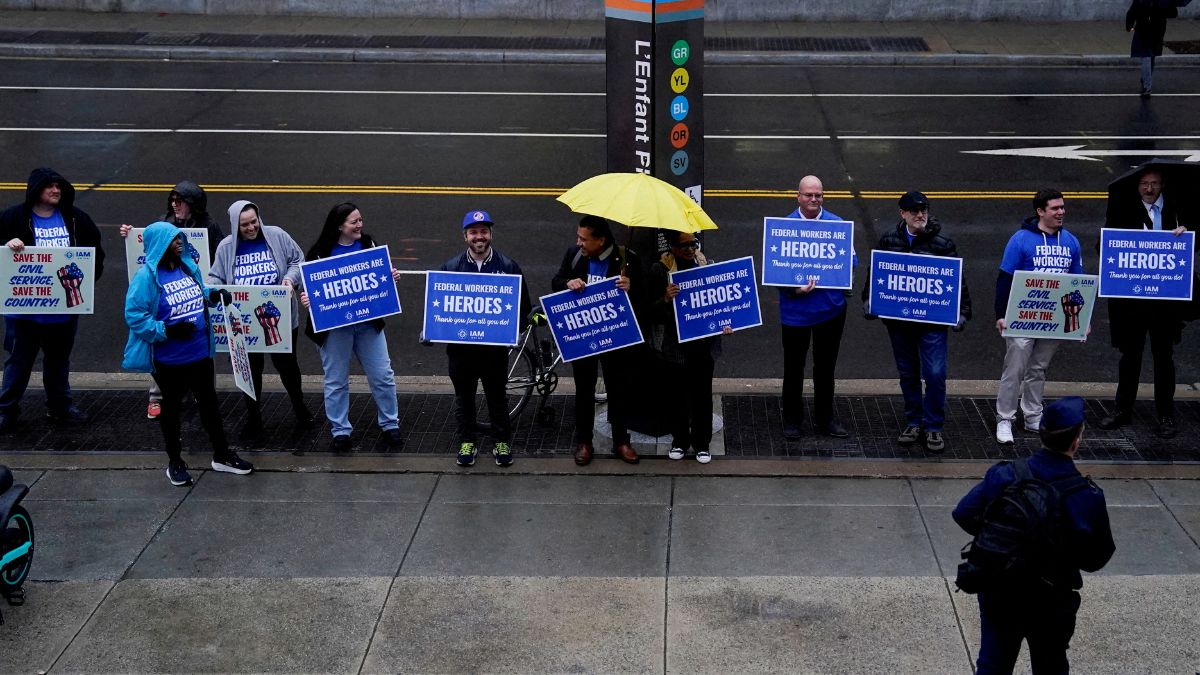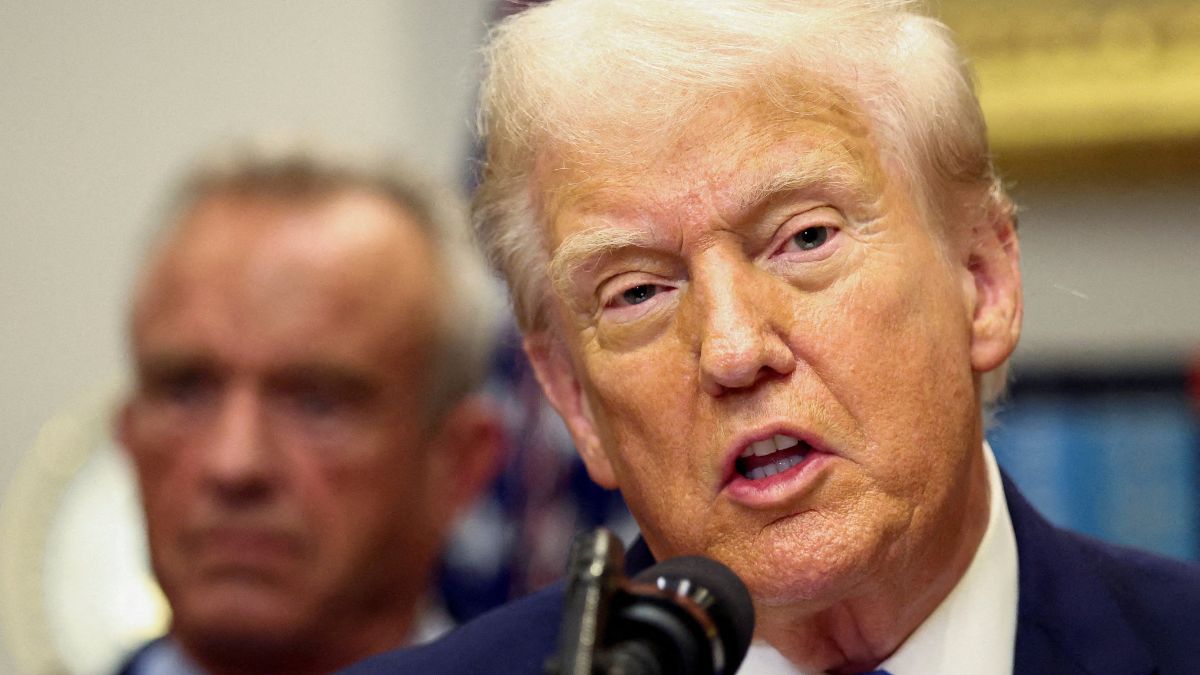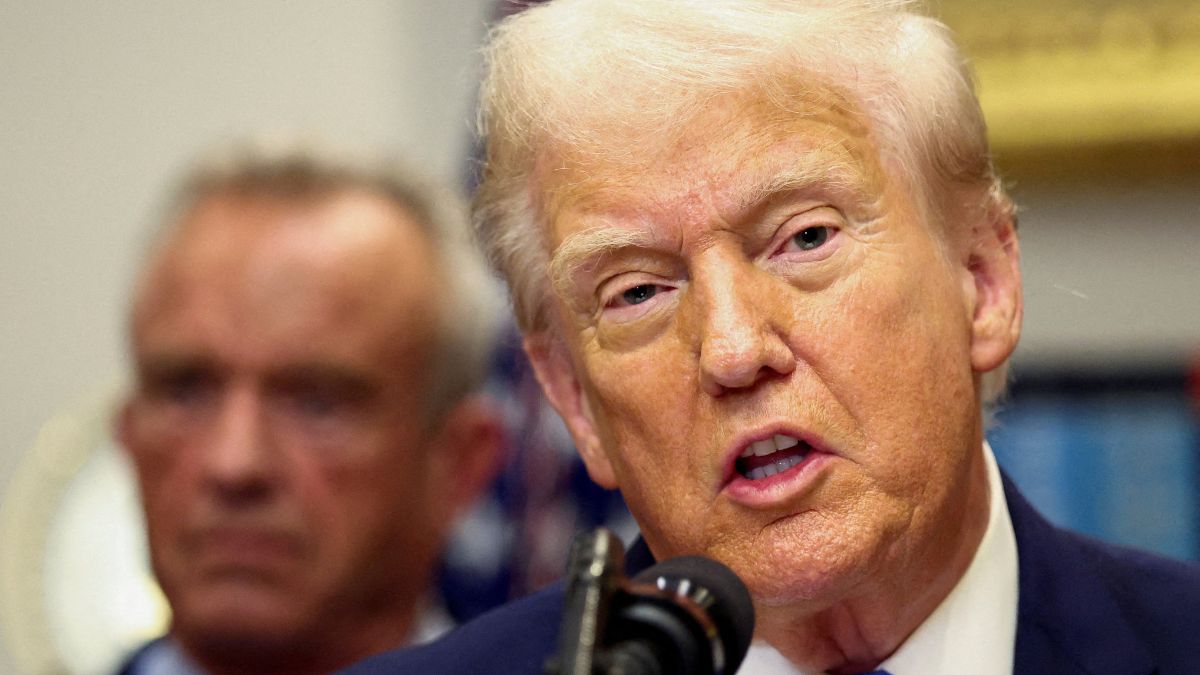The United States is once again on the edge of a government shutdown as a deeply divided Congress struggles to reach a funding agreement ahead of the September 30, 2025, deadline.
If no resolution is reached by midnight, large portions of the federal government will be forced to suspend operations, leaving hundreds of thousands of federal workers without pay and disrupting essential services relied on by millions of Americans.
This confrontation has quickly become about much more than budget numbers.
The battle pits US President Donald Trump, who is pressing forward with sweeping reforms to the federal workforce and an aggressive political agenda, against Democratic leaders in Congress, who are pushing back against cuts to healthcare and other domestic programmes.
With both sides refusing to compromise, the outcome could have major consequences.
Why is the US facing a shutdown?
The government’s fiscal year begins on October 1, which means Congress must approve a funding bill by the end of September to avoid a lapse in appropriations.
As of now, both chambers remain deadlocked.
The Republican-controlled House of Representatives passed a funding measure last week with only one Democrat voting in favour, but the Senate rejected competing stopgap bills, leaving the government without a clear path forward.
Earlier this week, Trump cancelled a scheduled meeting with top Democratic lawmakers, dismissing ongoing talks as pointless.
He accused Democratic leaders of making demands that he described as “unserious,” signalling that he was unwilling to compromise on their proposed conditions for keeping the government open.
The move angered Democrats, who have accused the White House and congressional Republicans of deliberately driving the government toward a shutdown.
Senate Minority Leader Chuck Schumer and House Minority Leader Hakeem Jeffries publicly criticised Trump for abandoning negotiations. At a press conference, Jeffries declared, “Democrats will not be intimidated,” in response to administration threats to fire federal workers if a shutdown occurs.
Republican leaders, meanwhile, have placed the blame squarely on Democrats.
House Speaker Mike Johnson told CNN, “Chuck Schumer came back with a long laundry list of partisan demands that don’t fit into this process, and he’s going to try to shut the government down. The president wants to talk with him about that and say, ‘Please don’t do that.’”
Schumer countered by saying that if Trump approaches negotiations seriously, a shutdown can be avoided.
Speaking to NBC, Schumer said, “If the president at this meeting is going to rant, and just yell at Democrats, and talk about all his alleged grievances, and say this, that, and the other thing, we won’t get anything done. But my hope is it’ll be a serious negotiation.”
What are the key issues behind the standoff?
At the heart of the current impasse are starkly different priorities between the two parties.
Democrats are demanding:
Continuation of Affordable Care Act subsidies that help lower health insurance costs for millions of Americans.
Reversal of Medicaid cuts implemented under Trump’s One Big Beautiful Bill Act.
Restoration of funding for public media, which was reduced under the administration’s budget rescission.
Republicans have rejected these demands, framing them as unrelated to the task of keeping the government running.
Senate Majority Leader John Thune called the proposals “completely unhinged and unreasonable and unserious,” while Democrats argue that failing to act will result in major hardship for American families.
Schumer highlighted this point on X, stating, “What’s ‘unserious’ is ignoring the 93% spike for health insurance coming to Americans on November 1.”
This dispute has been building for months.
In March, Schumer angered his party’s base by lending Democratic votes to pass a short-term, Republican-written funding bill without securing any concessions.
Many Democrats now view this fight as their opportunity to force policy changes before the new fiscal year begins.
How this will affect US federal workers?
Adding to the urgency of the negotiations is the Trump administration’s sweeping plan to dramatically shrink the federal workforce, the most extensive such effort since World War II.
According to a July report by Senate Democrats, more than 100,000 federal workers are set to formally resign on Tuesday as part of a deferred resignation programme.
Under this programme, employees are placed on administrative leave for up to eight months while continuing to receive their full salaries and benefits before officially leaving government service.
The total cost of this buyout is estimated at $14.8 billion. While administration officials argue that the one-time expense will ultimately save $28 billion annually, critics say it will undermine the ability of federal agencies to carry out essential functions.
A White House spokesperson defended the programme, saying there was “no additional cost to the government” because the employees would have been paid regardless.
They added, “In fact, this is the largest and most effective workforce reduction plan in history.”
Beyond the deferred resignation initiative, thousands of other federal employees have been fired outright under reduction-in-force orders.
When combined with natural attrition and early retirement programmes, the total reduction is projected to reach 275,000 employees this year — the largest single-year decline in civilian federal employment since the 1940s.
In an escalation, the Office of Management and Budget (OMB) issued a memo last week directing agencies to prepare for permanent layoffs in the event of a shutdown.
Unlike typical furloughs, which are temporary, these reductions would permanently eliminate positions in programmes whose funding expires and are deemed “not consistent with the president’s priorities.”
This development has heightened anxiety among federal workers. Jeffries, speaking at a press event, directly addressed Russell Vought, head of the OMB, saying, “Get lost.”
He claimed that Democrats would not be intimidated by threats of mass firings tied to the shutdown.
How have unions reacted?
Federal labour unions have strongly opposed these measures, arguing that they circumvent congressional oversight and harm the public.
The American Federation of Government Employees (AFGE) and other unions have filed a lawsuit against the deferred resignation programme.
The suit contends that the buyout violates statutory requirements by allowing mass departures that cripple government agencies, while also relying on the threat of forced firings to push employees into resigning.
Liz Shuler, president of the AFL-CIO, issued a sharp rebuke, stating, “They are not pawns for the president’s political games.” She highlighted that federal workers have “already suffered immensely” under the administration’s earlier workforce cuts this year.
Meanwhile, many employees participating in the programme have chosen to remain anonymous out of fear that speaking publicly could jeopardise future job prospects. They are entering a labour market already under strain.
In August, the unemployment rate rose to 4.3 per cent, its highest level since 2021, while only 22,000 new jobs were added. Analysts have partially attributed this slowdown to disruptions caused by tariffs imposed by the Trump administration.
How would a shutdown affect services?
If the deadline passes without a deal, the impact will be immediate and far-reaching.
Hundreds of thousands of federal employees will either be furloughed or required to work without pay.
Critical services such as Social Security payments, military operations, immigration enforcement, and air traffic control will continue, but with reduced staffing and potential delays.
National parks, Smithsonian museums, and other public sites may close entirely.
Food safety inspections and immigration hearings could be postponed, creating backlogs.
Postal services will continue uninterrupted, as they are funded separately.
Previous shutdowns have shown how disruptive these closures can be. The 34-day shutdown in 2018, also under Trump’s first presidency, sidelined approximately 800,000 federal workers, making it the longest shutdown in modern US history.
The economic impact could also be severe. While short-term disruptions might not immediately appear in broader economic data, a prolonged shutdown risks slowing growth, rattling financial markets, and undermining public confidence in government institutions.
What next for Trump vs Democrats?
This funding showdown comes amid a series of high-profile moves by Trump that have expanded executive authority and intensified partisan divisions.
In recent weeks:
Trump deployed federal troops to Portland, Oregon, claiming the city was a “war zone” amid scattered protests.
He intervened in the US Justice Department, leading to charges being filed against former FBI Director James Comey by a newly appointed prosecutor.
He announced plans to challenge birthright citizenship at the Supreme Court, a constitutional right that has been settled law for generations.
He backed controversial claims about vaccines promoted by Health and Human Services Secretary Robert F Kennedy Jr, while attacking scientific institutions and public health agencies.
These actions have alarmed critics, who view them as part of a broader effort by Trump to centralise power.
The budget fight has therefore taken on added significance, becoming a key test of whether Democrats can use their limited leverage — primarily the Senate filibuster, which requires 60 votes for most legislation — to constrain the president’s agenda.
Government shutdowns are historically risky for both presidents and lawmakers. Voters tend to punish those seen as responsible for the disruption, especially when essential services are affected.
The 2018 shutdown, for example, damaged public perceptions of Washington’s ability to govern effectively.
However, Trump appears less concerned with these potential repercussions. With most Republicans unified behind him, he has shown little inclination to compromise.
Democrats, on the other hand, face internal pressure to resist what they see as harmful cuts to healthcare and other vital programmes.
Trump is scheduled to meet with Schumer, Jeffries, and Republican leaders, but expectations for a breakthrough are low. Reports suggest the meeting may serve more to outline positions than to find common ground.
As the deadline approaches, both sides are calculating the political costs.
Also Watch:
With inputs from agencies


)

)
)
)
)
)
)
)
)



